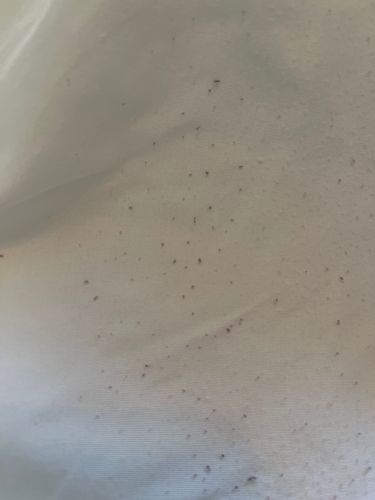Thrips
Scientific Name: Various species (e.g., Frankliniella occidentalis - Western flower thrips)
Order & Family: Order Thysanoptera, various families (e.g., Thripidae, Phlaeothripidae)
Size: Typically 0.5 to 2 mm in length

Natural Habitat
Thrips are found worldwide in diverse habitats, primarily on plants. They inhabit flowers, leaves, fruits, and buds of a vast array of crops, weeds, and ornamental plants. Indoors, they can be found on houseplants, in greenhouses, and sometimes flying indoors when populations are high outside.
Diet & Feeding
Thrips typically feed on plant sap by piercing plant cells and sucking out the contents. This feeding causes silvery stippling, distorted growth, and sometimes black fecal specks on leaves. Depending on the species, they can feed on a wide variety of plants, including fruits, vegetables, flowers, and ornamental plants. Some species are predatory and feed on other small insects or mites.
Behavior Patterns
Thrips are active insects, especially in warm weather. They often fly or are carried by wind to new plants. They reproduce rapidly, with some species being parthenogenetic (reproducing without mates). Their lifecycle from egg to adult can be as short as a week under optimal conditions, leading to multiple generations per year. Many species are attracted to light-colored surfaces and flowers.
Risks & Benefits
Risks: Thrips are significant agricultural and horticultural pests. Their feeding can cause cosmetic damage to plants, reduce crop yields, and in severe infestations, stunt plant growth or even kill young plants. More importantly, many thrips species are vectors for plant viruses, spreading diseases like Tomato spotted wilt virus, which can cause devastating losses to crops. Benefits: Some thrips species are beneficial predators, feeding on other pest mites and small insects, thus playing a role in biological control. Their role as pollinators is generally minor compared to bees and other insects, but some species can aid in pollination of certain plants.
Identified on: 8/11/2025